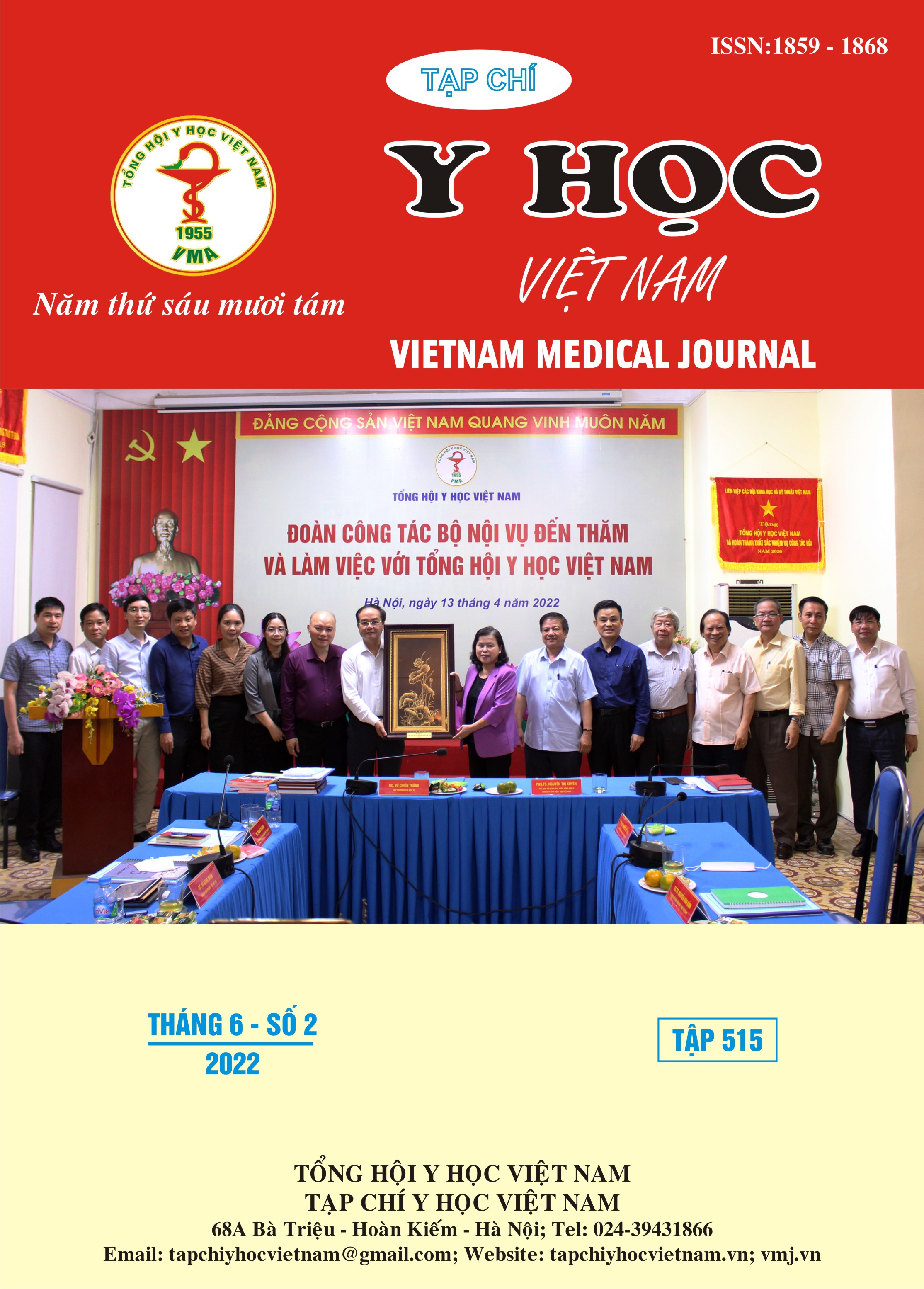FIND OUT THE FACTORS RELATED TO THE REHABILITATION OF KNEE MOBILITY AFTER ARTHROSCOPIC ARTHROLYSIS SURGERY
Main Article Content
Abstract
Objectives: Find out the factors related to the rehabilitation of knee mobility after arthroscopic arthrolysis surgery. Patients and methodology: 32 patients diagnosed with post-traumatic knee stiffness underwent arthroscopic arthrolysis surgery at VietDuc University Hospital from September 2020 to September 2021. The patients received rehabilitation treatment immediately after surgery to remove adhesions and continued for 2 months. Evaluate patients according to The Hospital for Special Surgery Knee Scores (HSS) at the time before and after rehabilitation treatment. Results: There was no significant difference in rehabilitation outcomes between men and women with p > 0.05. There was no significant difference in rehabilitation results between the two age groups above and below 60 years old with p>0.05. There was no significant difference in the results of rehabilitation between the primary groups of injuries, which were intra-articular, extra-articular or combined intra- and extra-articular damage with p> 0.05. There was no significant difference in the results of rehabilitation between the groups of conservative, arthroscopic surgery or open surgery groups with p>0.05. There was no significant difference in the outcome of rehabilitation between groups of patients, the time from injury to surgery was < 3 months, 3 - 6 months or more than 6 months. Conclusion: There was no significant difference in rehabilitation results between the two sexes, between the two age groups above and below 60 years old, between the primary injury groups being intra-articular, extra-articular or combined intra-articular and extra-articular damage, between groups with conservative, arthroscopic surgery or open surgery, between groups of patients, the time from injury to surgery is < 3 months, 3 - 6 months or > 6 months.
Article Details
Keywords
factors related, rehabilitation of knee mobility, arthroscopic arthrolysis surgery
References
2. Gittings D, Hesketh P, Dattilo J, Zgonis M, Kelly J, Mehta S (2016), Arthroscopic lysis of adhesions improves knee range of motion after fixation of intra-articular fractures about the knee. Arch Orthop Trauma Surg;136(12):1631-1635. doi:10.1007/s00402-016-2561-2
3. Liu Sh, Liu Km, Wang Aq, Gui Zg, Han Xz, Wang F (2016), Management strategies for post-traumatic knee stiffness. Biomedical.
4. Trần Mạnh Hùng (2011), Đánh giá kết quả phẫu thuật cứng gối tư thế duỗi sau chấn thương tại bệnh viện Việt Đức. Published online.
5. Vaish A, Vaishya R, Bhasin VB (2021), Etiopathology and Management of Stiff Knees: A Current Concept Review. Indian J Orthop. 2021; 55(2):276-284. doi:10.1007/s43465-020-00287-0
6. Dhillon MS, Panday AK, Aggarwal S, Nagi ON (2005), Extra articular arthroscopic release in post-traumatic stiff knees : a prospective study of endoscopic quadriceps and patellar release;71:7.
7. Pujol N, Boisrenoult P, Beaufils P (2014), Post-traumatic knee stiffness: Surgical techniques. Orthop Traumatol Surg Res. 2015;101(1,Supplement):S179-S186. doi:10.1016/j.otsr.06.026


